Wonder is part of the joy of being alive. But whether on far-flung shores or closer to home, we need to nurture it
Wonder is fine dining for the soul. There is no other animal on Earth, as far as we know, that can marvel at the planet like we can; that feels awe and humility, that is moved to tears by the sheer beauty of a sunset or the magnificence of the stars at night. Wonder is what makes us who we are. It drives us to explore, question and connect. And it is that impetus, to fill the world with all the possibilities of our imagination, that has carried us so far. Wonder is the pure joy of being alive. But we must nourish it for it to thrive.
That’s not always easy: there is a wonder deficit in our modern lives. We have become disconnected from our natural sources of awe. Our ancestors spent their days immersed in the splendour of nature and their nights blanketed by the vastness of the Milky Way. What was once our birthright has become a weekend luxury. Modern life is, in many ways, a relentless drive towards success. Every second is filled with information; the stars have been replaced by TVs and the natural world is seen only through computer screens. It has both swelled our egos and diminished our world: and it is causing us problems.
Reasons to support Positive News
#7: It’s beautiful and useful
We believe that news can be beautiful. That’s why our magazine isn’t only intelligent but also exquisitely designed. And, Positive News is a carbon neutral magazine printed to high environmental standards, so you can read it guilt-free.
Socrates said: “Wisdom begins in wonder.” Studies have shown that awe creates empathy and altruism. It helps us connect with others and the world around us in meaningful and lasting ways.
People experiencing awe showed more awareness of the present moment, an expanded sense of time, and improved cognitive processing abilities. Wonder is not just a fleeting passion, it is a seed from which the best things in life grow. Art, science and philosophy are born from it. We learn through wonder; through the sheer joy of exploring and engaging with the world. Awe is a catalyst for growth.
Wonder transcends all boundaries, nationalities and beliefs. It is a conduit to our past, our future and to a sense of something greater than ourselves
But it may be more than that too. Contemporary psychological theories of awe suggest that what we may in fact be feeling is a momentary dissolution of the self. In the presence of great wonder – from a sunrise over the Grand Canyon to the kaleidoscopic colours of the Great Barrier Reef – our egos are literally dwarfed by the enormity of the experience. For a fleeting moment, we see the world as unaltered by trivialities. Awe is more than just an emotion. It is a snapshot of enlightenment.
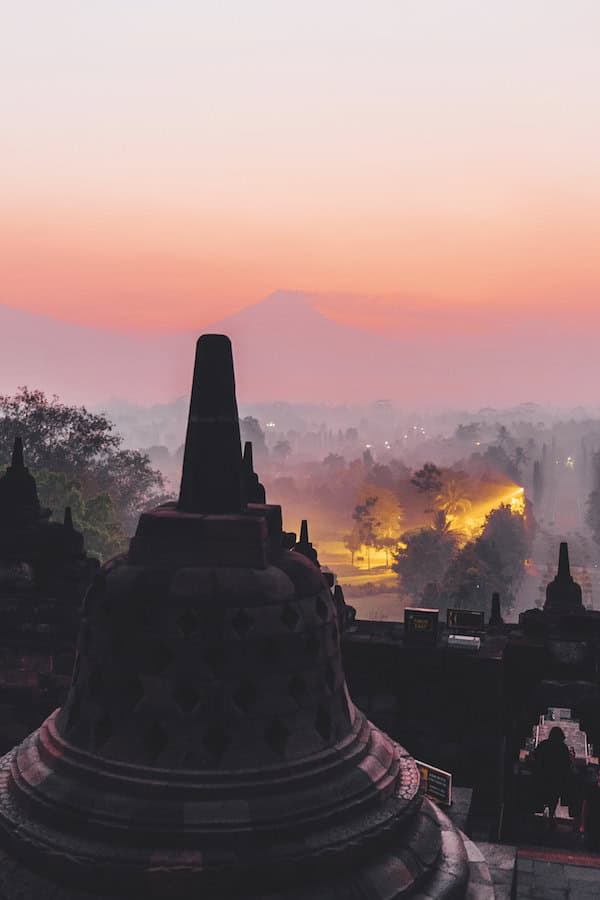
Borobudur, a ninth century Buddhist temple in Indonesia. Image: Guillaume Flandre
That’s why we need more of it. If there is one sentiment my travel writing aspires to achieve, it is this: live life to the full and feed your spirit well. Imagine standing beneath the sweaty heat of the tallest waterfall on the planet or lying on your back in the deepest lake in the world, 5,000 feet of darkness screaming up beneath you. Picture yourself walking up the freezing face of the tallest mountain on Earth, to touch 30,000-year-old cave paintings etched in stone and hear the thunder of a million wildebeest chasing rainbows across the Serengeti. I share experiences such as this through my writing because I believe that wonder can wake us up to life’s potential.
There are wonders of our time too: the Large Hadron Collider, the most complicated machine ever built, which is colder than outer space and creates explosions 100,000 times hotter than the centre of the sun. What about the International Space Station? It is the greatest global peacetime collaboration in history and our first step towards the stars. The Rio Carnival erupts with colour and joy: the biggest party on the planet.
We don’t have to travel halfway around the world to fill the wonder deficits in our lives
But we don’t have to travel halfway around the world to fill the wonder deficits in our lives. Making time for short but powerful injections of transcendence is also beneficial. Try listening to your favourite song at full volume, looking at a flower through a microscope or reading a few lines of poetry with your breakfast. They will leave you feeling happier, humbler and more thankful for your blessings. And these actions may make you physically healthier too. In one study, people with a greater predisposition to awe showed lower levels of a type of protein found in the immune system, cytokine. Known as interleukin 6, it is thought to contribute to heart disease and even depression.
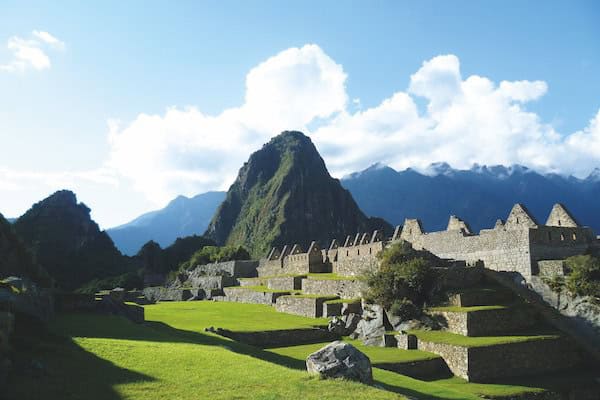
The Inca citadel of Machu Picchu, a world heritage site in Peru. Image: Inn Travel
Wonder transcends all boundaries, nationalities and beliefs. It is a conduit to our past, our future and to a sense of something greater than ourselves. It is the stuff that makes life worth living. And it begins with us, because the real magic of wonder is the fact that the more we look for it in the world, the more the wonder of the world shines through us.
Explore, dream and feed your soul well.
Three destinations to overcome your wonder deficit
Kumbh Mela: India
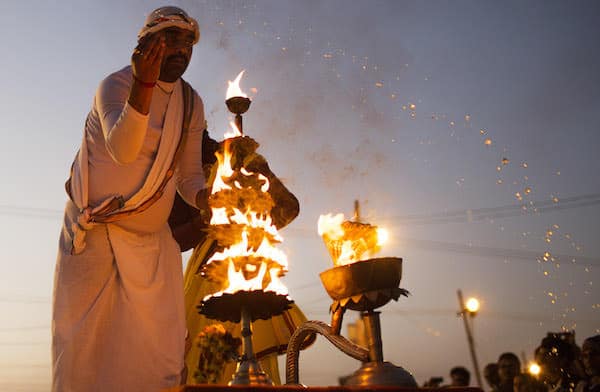
A holy man performs evening prayers as the sun sets during the Kumbh Mela festival in Allahabad. Image: Andrew Caballero-Reynolds/AFP/Getty Images
The Hindu Kumbh Mela festival in India is thought to be the largest act of faith on the planet. In recent years, more than 100 million people have taken part in the 55-day event – more than the entire population of the United Kingdom. Processions of holy men lead devotees into sacred rivers for ritual cleansing, mystics read from sacred texts, bands play, rejoicing abounds. The Kumbh Mela is the ultimate religious spectacle on the planet and an enduring symbol of what it means to be human.
Bristlecone Pines: California, US
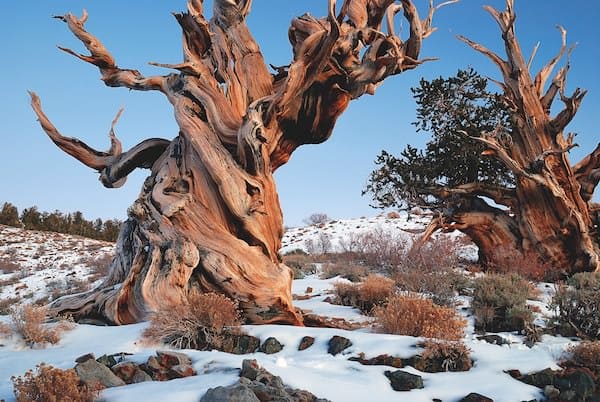
Bristlecone Pines. Image: Lonkankara
At nearly 5,000 years old, Bristlecone Pines are the oldest living organism on Earth. They pre-date the birth of Christ, the fall of Troy and the invention of the alphabet. To be near these gnarled and wind-twisted trees is to touch what geologists call ‘deep time’.
Yet it’s what they’re teaching us that is truly astonishing. Written within their ancient rings is a detailed record of the Earth’s history, information that is helping in the fight against climate change and has even altered our understanding of the development of human civilisation itself.
Chauvet Cave: Ardèche, France
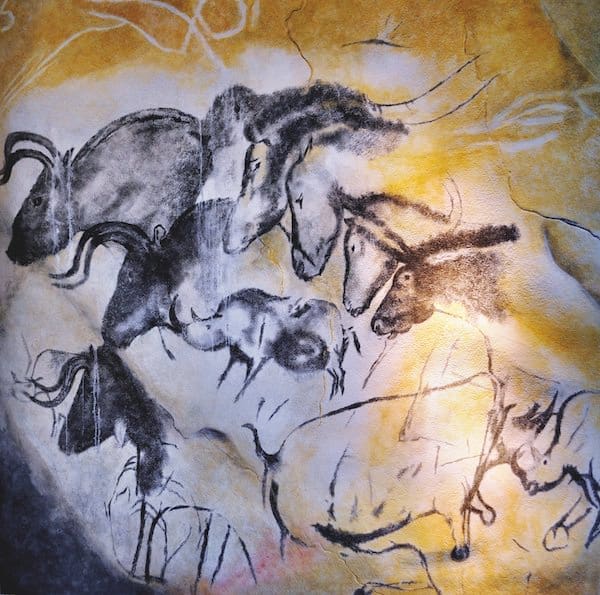
Chauvet Cave. Image: Thomas T.
The Chauvet Cave, in south-west France, holds some of the most ancient, and sophisticated, cave drawings on the planet. Nestled inside are 30,000-year-old paintings of rhinoceroses, horses and lions crouching mid-prowl. These detailed etchings, once thought impossible for their time, represent the birth of human creativity and imagination, a turning point in our evolution, when we began to transcend animal instincts and started to dream as human beings instead.
Featured image: Monument Valley, Navajo, US by Al King
Aaron Millar is an award-winning travel writer and travel editor of Positive News. His book, The 50 Greatest Wonders of the World, is available now from Icon Books.
*This competition is now closed*
Competition: two copies of The 50 Greatest Wonders of the World book are up for grabs in our competition. To enter, tell us about a moment of wonder you’ve experienced while travelling. Share your memory by tagging us on any of our social media channels (Facebook, Twitter or Instagram), and using the hashtag #PositiveTravel. Entries must be posted before 5pm on April 25. We will pick our two favourites and contact the winners after April 25. The competition is open to UK residents only. We will not share your details with anyone else.
